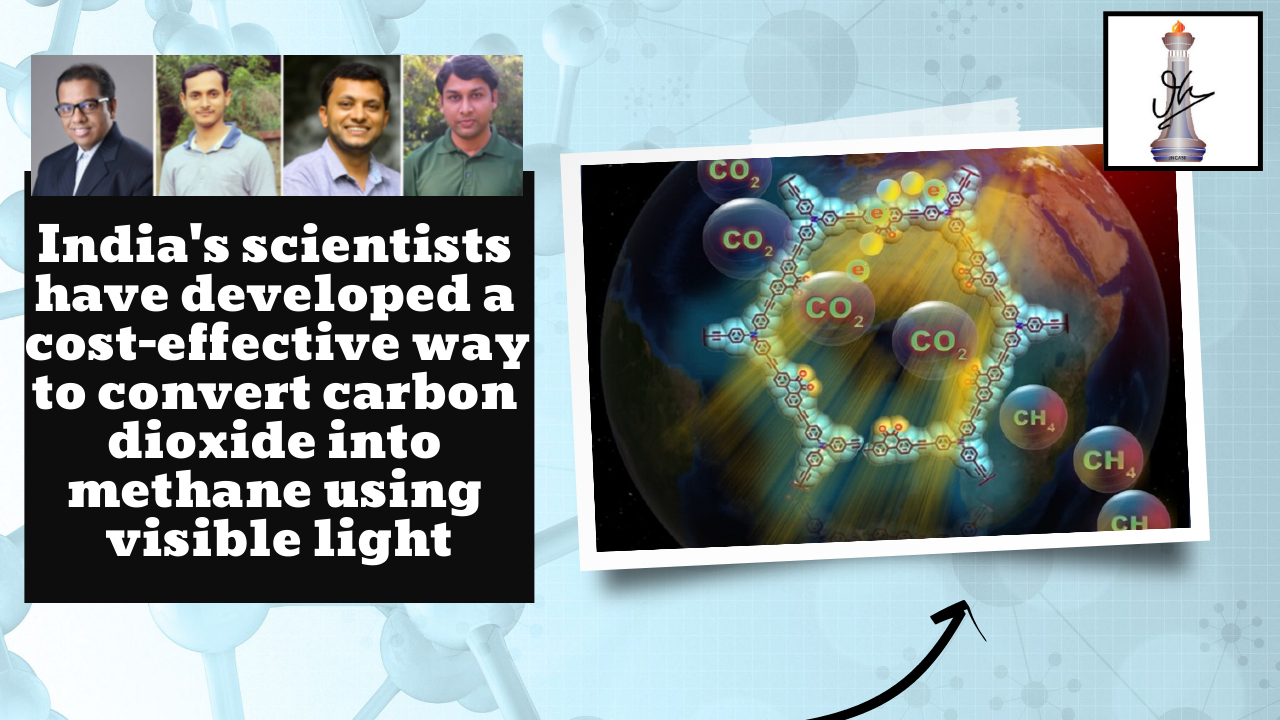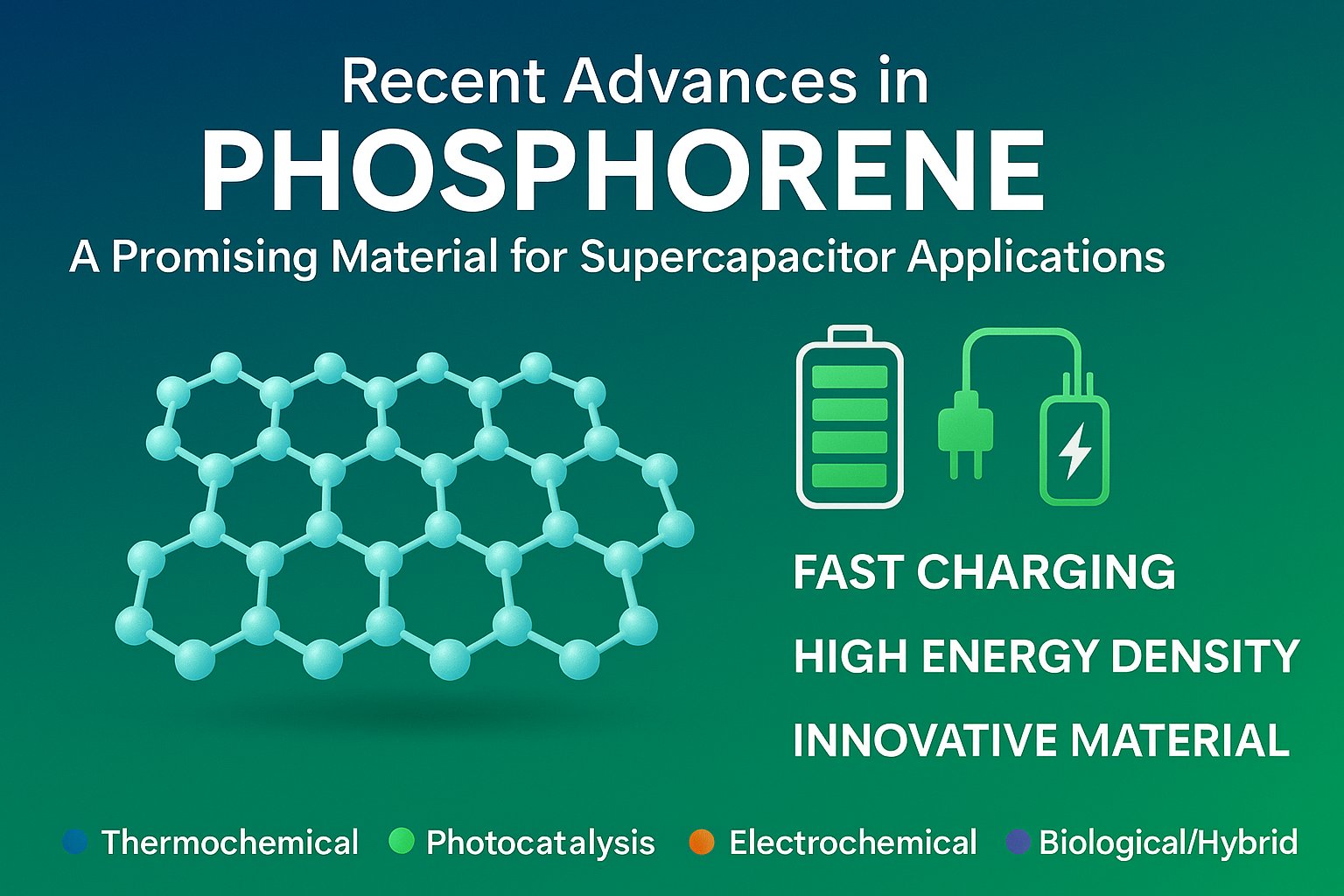Scientists from the Jawaharlal Nehru Centre for Advanced Scientific Research (JNCASR), an independent institute of the Department of Science and Technology, Government of India, design a metal-free porous organic polymer that can absorb visible light and accelerate the reduction reaction of CO2.
Indian Researchers have developed a metal-free catalyst that can efficiently convert CO2 into methane through the absorption of visible light. As a hydrogen carrier, methane in fuel cells is the cleanest-burning fossil fuel. As a result, it has the potential to replace coal as a source of electricity. It has been discovered that porous heterogeneous catalysts can be used to create a carbon capture and reduction system without the need of metals. Since it can take in a lot of CO2 during catalysis, the chemical conjugated microporous polymer (CMP) was able to capture it on its surface.
Key Highlight:
- Indian Researchers have developed a metal-free catalyst that can efficiently convert CO2 into methane through the absorption of visible light.
- As a hydrogen carrier, methane in fuel cells is the cleanest-burning fossil fuel.
- It has the potential to replace coal as a source of electricity.
- Since it can take in a lot of CO2 during catalysis, the chemical conjugated microporous polymer (CMP) was able to capture it on its surface.
- The results of this study have been accepted for publication in the Journal of the American Chemical Society.
Using the absorption of visible light, Indian scientists have developed a metal-free catalyst that can efficiently convert CO2 into methane.
Methane (CH4), the cleanest burning fossil fuel, may be utilized directly in fuel cells as a hydrogen carrier and is being researched as a value-added product to minimize CO2. A major component of natural gas, it has the potential to replace coal in electricity generation and provide a flexible supply for intermittent renewable generators that are intermittent in nature.
One technique to minimize CO2 is by using one of the many different methods available. As a renewable energy source, the photochemical process makes use of the sun’s light.
CO2 can be converted into valuable chemicals with the help of photocatalysis, but this requires a photocatalyst that has a few critical features, such as the ability to separate charge carriers (electron-hole pairs) and the presence of a properly aligned conduction band. Reducing CO2 to CH4 selectively and efficiently, then, is a difficult problem to overcome In order to selectively and efficiently decrease CH4, you need a catalyst that contains metal equivalents, which are toxic and expensive.
For this reason, scientists from the Jawaharlal Nehru Centre for Advanced Scientific Research, an independent institute of the Department of Science & Technology, have developed a metal-free porous organic polymer capable of absorbing visible light and catalyzing the CO2 reduction reaction.
In order to create a strong and thermally stable conjugated microporous organic polymer that was used as a heterogeneous catalyst, they constructed a donor (tris-4-ethynylphenylamine)-acceptor (phenanthaquinone) assembly by C-C coupling. In contrast to other common metal-based catalysts where the metal counterpart performs the CO2 reduction reaction, the keto group in the phenanthraquinone moiety worked as a catalytic site for this study (CO2RR). As a value-added product, the chemical known as the conjugated microporous polymer (CMP) can absorb CO2 onto its surface during the catalysis process and then convert it to methane as a value-added by converting it. The push-pull synergy between the electron rich donor and the electron-deficient acceptor promoted efficient electron-hole separation, increasing electron transfer kinetics and aiding in efficient catalysis. In the Journal of the American Chemical Society, the results of this study have been accepted for publication.
Carbon capture and reduction can be assembled in a new strategic approach using metal-free, cost-effective systems with high CH4 production rates. This is because porous heterogeneous catalysts are highly efficient.
#Scientists from @jncasr design a metal-free porous organic polymer in such a way that it will be able to absorb visible light & catalyze the #CO2 reduction reaction as well. @DrJitendraSingh @RenuSwarup
— DSTIndia (@IndiaDST) October 29, 2021
➡️https://t.co/6uKn10Heir pic.twitter.com/LqUrImDOpN
Indian Scientists from @jncasr have designed a cost-effective metal-free catalyst to convert CO2 to methane by absorption of visible light.
— Amiet R. Kashyap (@Amitraaz) October 27, 2021
Ongoing research is making a significant effort to reduce CO2 into value-added products, methane (CH4) could be one of the value-added pic.twitter.com/ysxwIVPnpc





[…] Indian scientists (JNCASR) design a cost-effective way to convert carbon dioxide into methane […]